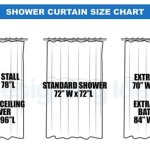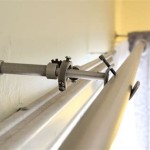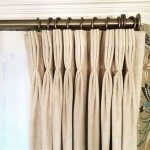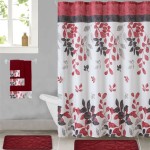What Is The Difference Between Curtains and Draperies?
The terms "curtains" and "draperies" are often used interchangeably, leading to confusion among consumers and even within the interior design industry. While both serve the fundamental purpose of covering windows, distinct characteristics differentiate them. Understanding these differences can help individuals make informed decisions when selecting window treatments for their homes or businesses, ensuring both aesthetic appeal and functional efficiency.
At their core, both curtains and draperies are fabric panels designed to hang from a rod or track, providing privacy, light control, and insulation. However, the distinctions lie primarily in factors such as fabric weight, lining, length, style, and overall formality. These elements contribute to varying levels of functionality and aesthetic impact, making each type more suitable for specific applications.
Fabric Weight and Construction
Fabric weight is a critical factor distinguishing curtains from draperies. Curtains are generally made from lighter, less substantial fabrics such as cotton, linen, voile, or sheer materials. These fabrics allow natural light to filter through, creating a bright and airy atmosphere. The lighter construction also makes them easier to manipulate, allowing for gentle draping and gathering.
Draperies, on the other hand, are typically constructed from heavier, more luxurious fabrics like velvet, brocade, damask, or thick wool blends. These denser materials offer enhanced light blocking capabilities, improved insulation, and greater privacy. The weight of the fabric dictates a more structured and formal appearance, often lending a sense of elegance and grandeur to a space.
The construction methods also differ significantly. Curtains often feature simpler designs with minimal embellishments. They are usually unlined or have a light lining, primarily for aesthetic purposes or to provide a degree of privacy. The focus is on showcasing the fabric's natural drape and texture.
Draperies frequently incorporate multiple layers of fabric, including a lining and potentially an interlining. The lining provides additional insulation, protects the face fabric from fading due to sunlight exposure, and enhances the drapery’s overall appearance by adding body and fullness. Interlining, a layer of fabric placed between the face fabric and the lining, further improves insulation and sound absorption, making draperies a more effective barrier against external elements.
Lining and Functionality
The presence and type of lining significantly influence both the appearance and functionality of window treatments. Curtains may feature a simple, unattached lining or no lining at all. An unlined curtain allows maximum light penetration, creating a soft, diffused effect that is ideal for spaces where natural light is desired. A light lining, such as a privacy lining, adds a minimal layer of opacity, reducing visibility from the outside without completely blocking light.
Draperies are almost always lined, and the type of lining chosen impacts their performance. Blackout linings are commonly used to completely block out light, making them suitable for bedrooms, home theaters, or any space where darkness is desired. Dimout linings offer a moderate level of light reduction, providing privacy while still allowing some ambient light to enter the room. Thermal linings enhance insulation, helping to regulate room temperature and reduce energy costs.
The functional benefits of drapery linings extend beyond light control and insulation. They also contribute to noise reduction, helping to create a quieter and more peaceful environment. The multiple layers of fabric absorb sound waves, minimizing external noise pollution. Furthermore, linings protect the face fabric from damage caused by sunlight, extending the lifespan of the draperies and preserving their color and appearance.
The choice between lined and unlined window treatments depends on the specific needs and preferences of the individual. Curtains are suitable for spaces where natural light is desired and privacy is not a primary concern. Draperies, with their enhanced lining options, offer greater control over light, privacy, and temperature, making them ideal for spaces where these factors are paramount.
Length, Style, and Formality
Length is another distinguishing characteristic between curtains and draperies. Curtains typically fall to the windowsill or extend slightly below it. This shorter length allows for easy movement and access to the window, making them practical for frequently used windows. The casual length also contributes to a more relaxed and informal aesthetic.
Draperies, in contrast, are usually floor-length, extending to the floor or even slightly pooling on the floor for a more dramatic effect. This longer length adds a sense of elegance and formality to a space. The pooling effect, where the fabric gathers on the floor, creates a luxurious and opulent look. However, it's important to consider potential drawbacks such as increased cleaning requirements and potential tripping hazards.
The style and overall formality of curtains tend to be more relaxed and versatile. They are available in a wide range of styles, from simple rod pocket curtains to more elaborate pleated designs. The ease of installation and maintenance makes them a practical choice for various settings. They often feature simpler headings, such as rod pockets or grommets, which contribute to their informal appearance.
Draperies, with their heavier fabrics, elaborate linings, and longer lengths, typically convey a more formal and sophisticated aesthetic. They are often used in formal living rooms, dining rooms, and master bedrooms, where a sense of grandeur is desired. They frequently feature more complex headings, such as pinch pleats, goblet pleats, or tailored pleats, which require professional installation and contribute to their structured and elegant appearance.
The choice between curtains and draperies depends heavily on the desired aesthetic and the specific needs of the space. Curtains offer a casual and versatile option for spaces where natural light is desired and a relaxed atmosphere is appreciated. Draperies, with their formal appearance and enhanced functionality, are ideal for creating a sense of elegance and sophistication in spaces where light control, privacy, and insulation are paramount.
In essence, while both curtains and draperies are window coverings, their distinct characteristics make them suitable for different purposes and aesthetics. Curtains offer a lighter, more casual option, while draperies provide a heavier, more formal solution with enhanced functionality. Understanding these key differences allows individuals to select the window treatment that best suits their needs and complements their overall design scheme. Further consideration should also be given to the hardware required for each type, ensuring proper installation and optimal performance.

What Is The Difference Between Drapes And Curtains

Draperies Or Curtains What S The Difference Windows Dressed Up

Choosing Between Drapes And Curtains What You Need To Know

Curtains Vs Drapes What S The Difference

Drapes Vs Curtains Differences How To Choose The Shade

Curtains Vs Drapes What S The Difference

Difference Between Drapes And Curtains

What Are The Differences Between Curtains And Drapes
:max_bytes(150000):strip_icc()/spr-velvet-curtains-for-your-home-tout-9b89561cec2040bf9d90ae3240862d3f.jpg?strip=all)
Drapes Vs Curtains Shades And Blinds What S The Difference

Curtain Headings Knowing The Difference 247 Blog 247curtains Co Uk








